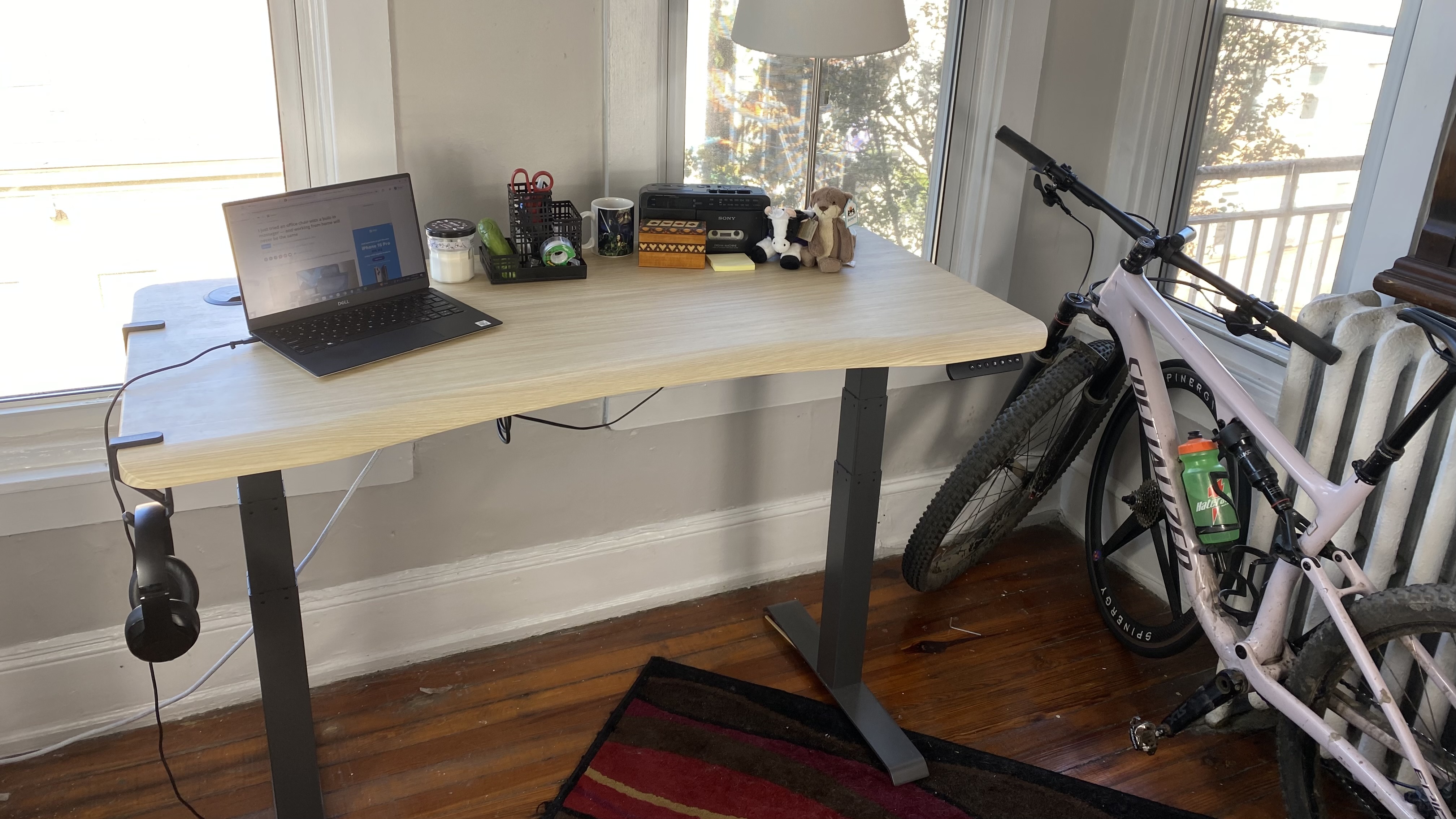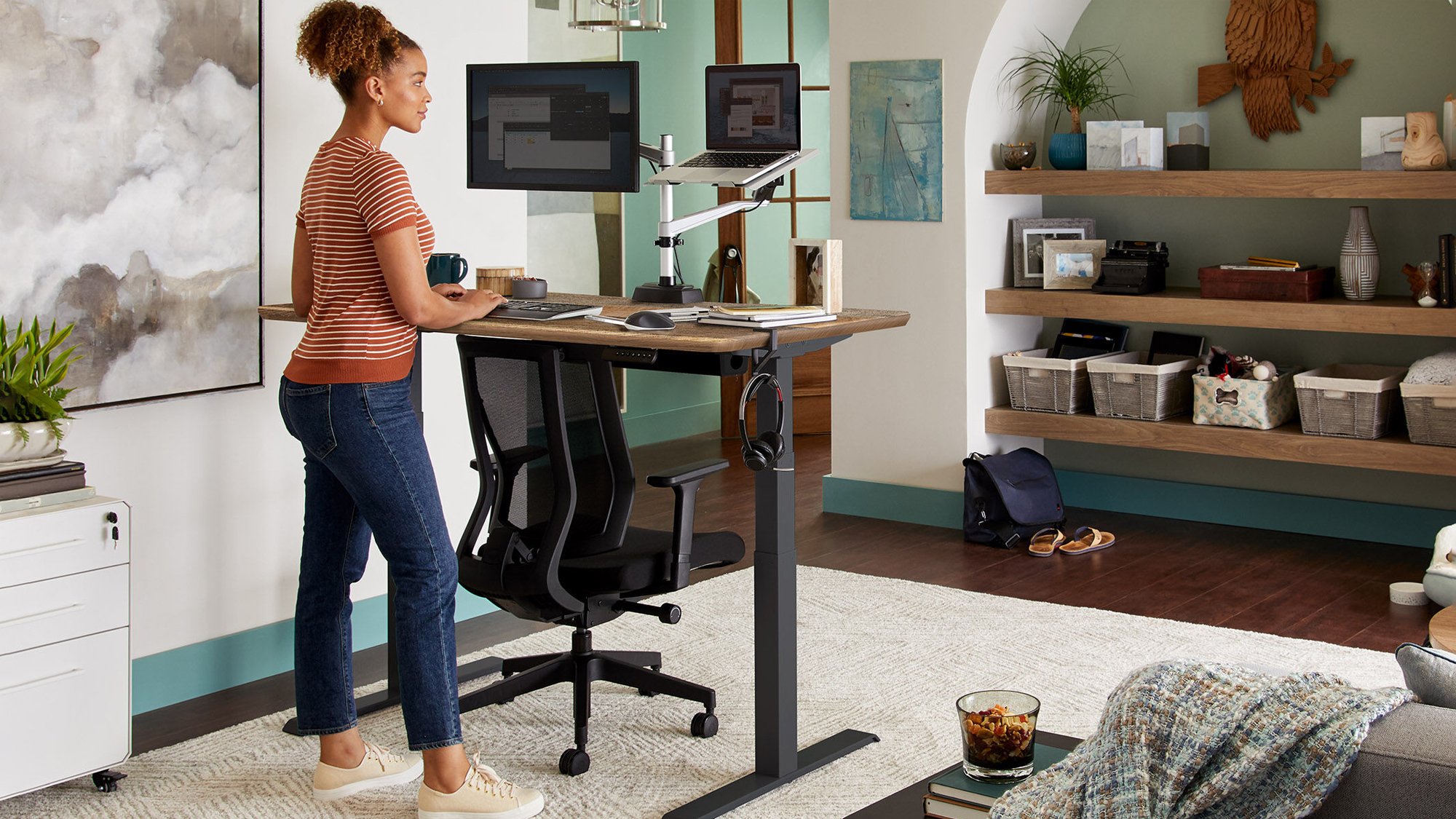
As a former fitness journalist, I'm wary when brands make claims about the long-term health benefits of their products. Many stretch the truth to get you to invest in some special workout equipment, a pair of shoes, or a nutrition supplement, and the battlefield of research surrounding these claims can make finding the truth incredibly difficult. That's why I always try to focus on the tangible, measurable benefits of products I test and review.
To that end, when I read about a recent study asserting that standing at your desk doesn't actually affect your circulation, I wasn't shocked. There had been little to no long-term research affirming this claim, and I have enough experience standing while working to know that my blood wasn't pumping any smoother after seven years on my feet.
That said, I have one of the best standing desks in my office, and I don't intend to get rid of it. That's because I have plenty of functional reasons for using it that reach beyond any potential quacky claims of health benefits.
What the study says
Researchers at the University of Sydney tracked the cardiovascular health of thousands of workers for nearly seven years, as well as their sitting and standing habits. Their findings indicated that standing presented no significant change in cardiovascular health. They also found that standing workers were at higher risk of circulatory issues such as varicose veins and deep vein thrombosis.
The study concluded that standing still at your desk is, in essence, just as 'sedentary' as sitting. Instead of forcing yourself to stand all day, these researchers recommend trying to fit 30 minutes of moderate-to-strenuous exercise into your schedule.
My experience with standing while working

Before I was a journalist, I was a bike mechanic for seven years. All day every day, I stood on my feet, because it made little to no sense to have a chair in my workstation. Sitting would hinder me as I reached to grab tools, my bench would be too tall for me to use for anything, and I would struggle to fit a chair between my bench and the bike in my stand.
Though I tend to like being on my feet, I despised having to stand for eight hours a day, even when I worked atop a mat. I went home every day with sore feet and stiff legs, and my posture was (and admittedly still is) atrocious. I only found relief from this discomfort when I started going for a walk during my lunch break every day — it was the only time I got to spend actually moving my legs and getting my blood pumping.
Once I landed my first desk job out of college, I then encountered the opposite problem: I was sitting all day, and I rarely got up from my chair. I felt like I was rising from the dead every time I lifted myself out of my seat at 5 p.m., and I had many of the same stiffness issues I had when I stood all day.
My issues with comfort didn't resolve until I learned that my desk at that office was a standing desk. Suddenly, I found myself swapping between sitting and standing a dozen times a day, and that variety gave me a sense of control over my work environment and got me right out of my rut.
When is a standing desk still worth it?

In my case, a standing desk is perfect for my stir-crazy temperament because it allows me to switch up my workspace on the fly. I've found that standing on occasion motivates me to take more breaks from standing at my desk itself, which gets my legs moving and keeps me from feeling cloistered away in my office.
A standing desk can also be great if you have multiple people using your work space who might prefer it at different heights. Better yet, if you like to store large boxes under your desk, you can always shift your desk up just a hair to make sure everything fits underneath.
Lastly, standing desks afford you the space to slide one of the best under-desk treadmills under your feet. If getting your blood flowing is a priority, these low-speed treadmills present a perfect opportunity to knock some steps out without leaving your desk. It's not always easy to get fine-motor work like typing done while you're trotting away on one of these, but they can absolutely help a meeting fly by.
When do stationary desks make more sense?
Stationary desks may not have any height adjustability, but most of them offset this shortcoming with more abundant storage. Standing desks seldom have room under the desktop to include substantial drawers, shelves, or cabinets, but normal desks tend to prioritize built-in storage. For example, our current pick for the best desk, the Topsky Computer Desk, has a secondary shelf that runs under the entire width of the desktop, and it's big enough to store sizable cargo like books or even one of the best Wi-Fi routers.
Normal desks also tend to be lighter relative to their size than standing desks because there isn't any heavy machinery to be found in their innards. Though they aren't always as easy to assemble or disassemble, you may not need to do that in order to carry yours.







